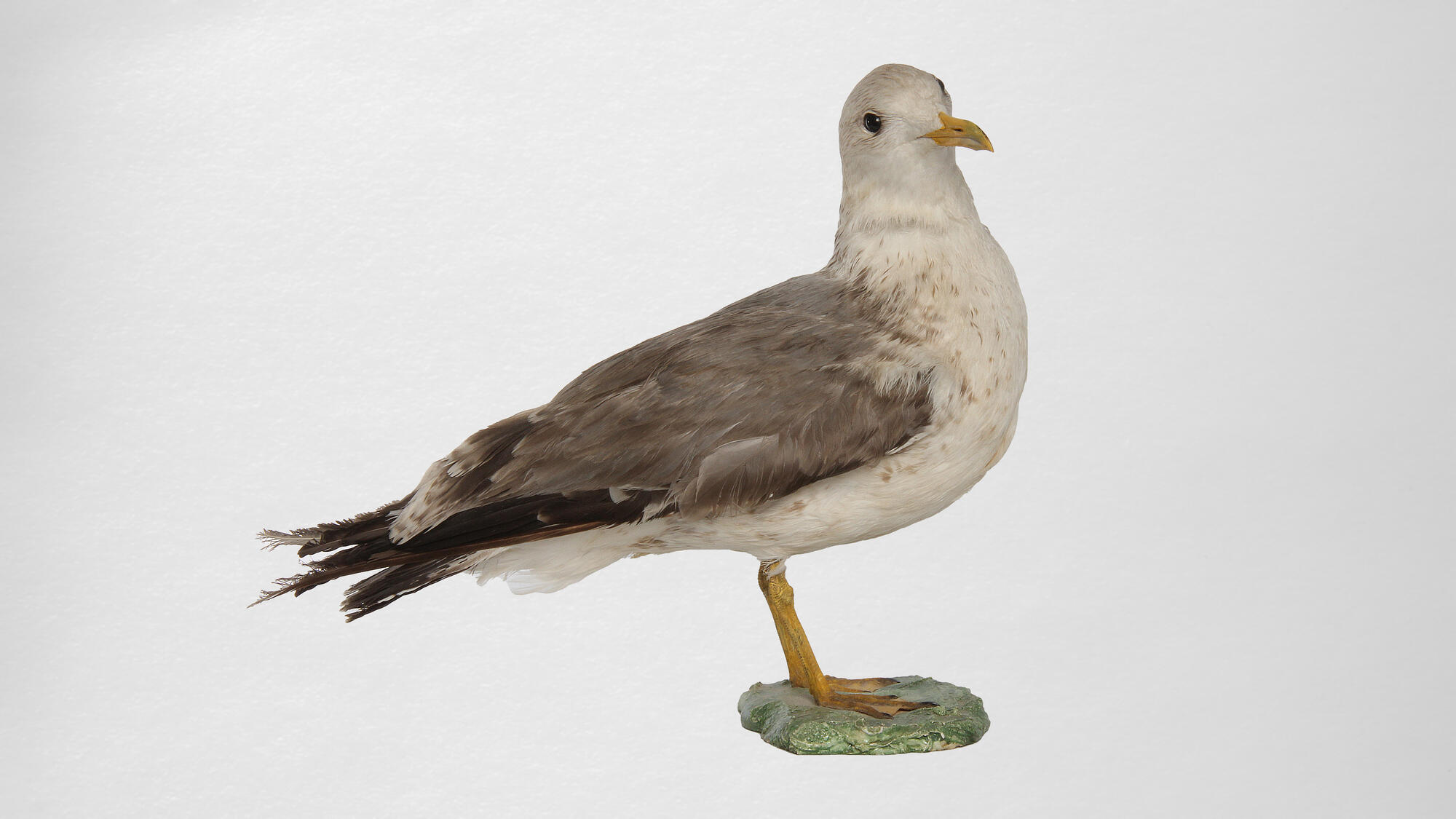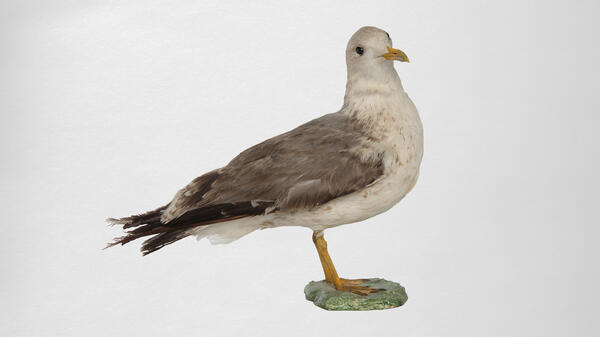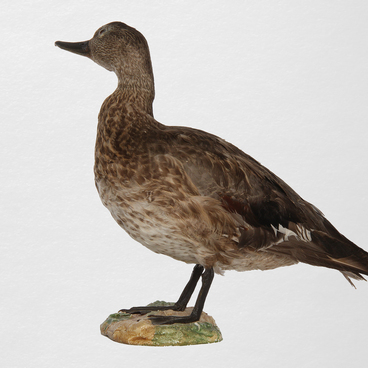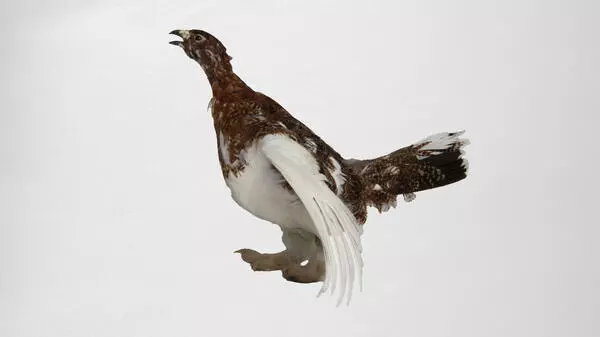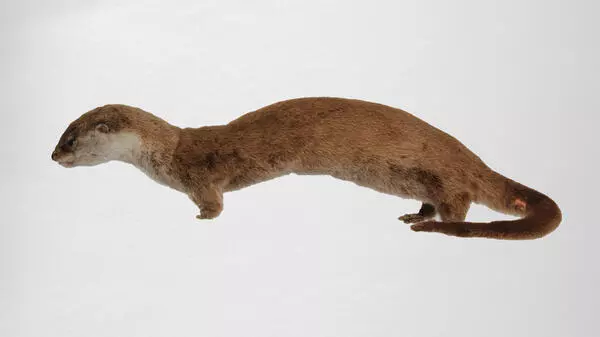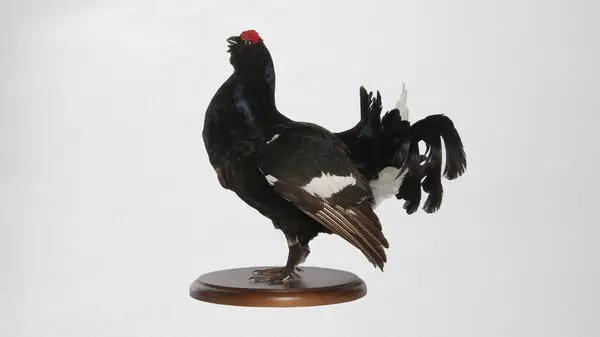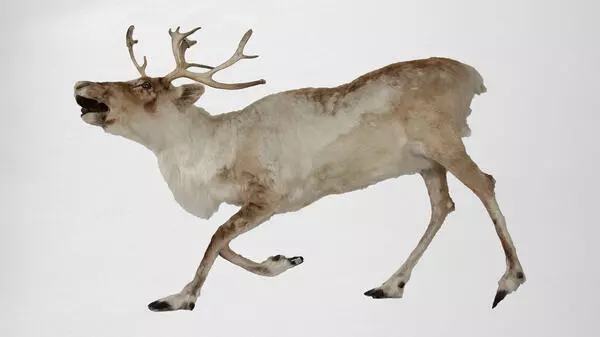The common gull belongs to the Laridae family and inhabits the northern part of Russia from the White Sea to the lower reaches of the Anadyr and the shores of Kamchatka and further south to the steppe zone of Western and Eastern Siberia.
An adult common gull is small sized, its body length can be up to 43 centimeters, and its wingspan is about 120 centimeters. The bird weighs up to half a kilogram.
In the breeding plumage, the head, neck, bottom and sides of the body, rectrices and pennaceous tail feathers are white, and the back, shoulder and upper pennaceous feathers, as well as all the flight feathers, are gray with different bluish shades. The tips of the wings are black and white. By winter, gray or brown spots or streaks appear on the head and neck of the gull. By the color of plumage, the male practically does not differ from the female.
The beak of a common gull is curved downward; its long feet are yellow-green. Between the eyes and the base of the seagull’s beak, you can see some swelling — subcutaneous salt-secreting glands. They are used to remove excess salt, which enters the bird’s body along with food and sea water.
The staple food of the common gull is fish. The bird hunts in open water, catching fish near the surface: looking for prey from the air, the gull can dive after it to a depth of one meter.
It also feeds on worms, insects, plant parts and food waste. Like the black-headed gull, the common gull often searches landfills, pecking out everything edible. On the shoals and muddy coasts, it eats crabs and shellfish, as well as dead fish which had been thrown ashore by the tides. Sometimes it takes food from crows and other birds, including other gulls.
Common gulls begin to breed when they are two to four years old. In the formation of a pair, the male is very active; in the future he guards the nesting area that he had chosen. It often happens that the female and the male winter in different places, and are found only in the spring at the nesting site.
Both birds take part in nest building. The nest can be a hole in the soil or a rough structure of mosses and lichens, algae, willow twigs, stems and cereal roots, dry stems and reed debris. The common gull always builds a nest in a damp place, but in some cases birds make it on the tree branches or on the stumps.
Seagulls make one clutch of eggs per year. Females begin to lay eggs in May and June, usually there are two or three olive-colored eggs with brown spots. Both parents incubate the offspring taking turns during three to four weeks; both are also responsible for feeding the hatched chicks. Hatchlings are fed six times a day.
In the first days after the birth, the hatchlings are kept warm by both parents; independent thermoregulation is established on the third day of life. The chicks begin to walk in the nesting area at the age of 10 to12 days. They fly for the first time 35 days after leaving the egg. Growing up, young common gulls unite in flocks and begin to wander around lakes and swamps searching the food.
An adult common gull is small sized, its body length can be up to 43 centimeters, and its wingspan is about 120 centimeters. The bird weighs up to half a kilogram.
In the breeding plumage, the head, neck, bottom and sides of the body, rectrices and pennaceous tail feathers are white, and the back, shoulder and upper pennaceous feathers, as well as all the flight feathers, are gray with different bluish shades. The tips of the wings are black and white. By winter, gray or brown spots or streaks appear on the head and neck of the gull. By the color of plumage, the male practically does not differ from the female.
The beak of a common gull is curved downward; its long feet are yellow-green. Between the eyes and the base of the seagull’s beak, you can see some swelling — subcutaneous salt-secreting glands. They are used to remove excess salt, which enters the bird’s body along with food and sea water.
The staple food of the common gull is fish. The bird hunts in open water, catching fish near the surface: looking for prey from the air, the gull can dive after it to a depth of one meter.
It also feeds on worms, insects, plant parts and food waste. Like the black-headed gull, the common gull often searches landfills, pecking out everything edible. On the shoals and muddy coasts, it eats crabs and shellfish, as well as dead fish which had been thrown ashore by the tides. Sometimes it takes food from crows and other birds, including other gulls.
Common gulls begin to breed when they are two to four years old. In the formation of a pair, the male is very active; in the future he guards the nesting area that he had chosen. It often happens that the female and the male winter in different places, and are found only in the spring at the nesting site.
Both birds take part in nest building. The nest can be a hole in the soil or a rough structure of mosses and lichens, algae, willow twigs, stems and cereal roots, dry stems and reed debris. The common gull always builds a nest in a damp place, but in some cases birds make it on the tree branches or on the stumps.
Seagulls make one clutch of eggs per year. Females begin to lay eggs in May and June, usually there are two or three olive-colored eggs with brown spots. Both parents incubate the offspring taking turns during three to four weeks; both are also responsible for feeding the hatched chicks. Hatchlings are fed six times a day.
In the first days after the birth, the hatchlings are kept warm by both parents; independent thermoregulation is established on the third day of life. The chicks begin to walk in the nesting area at the age of 10 to12 days. They fly for the first time 35 days after leaving the egg. Growing up, young common gulls unite in flocks and begin to wander around lakes and swamps searching the food.
